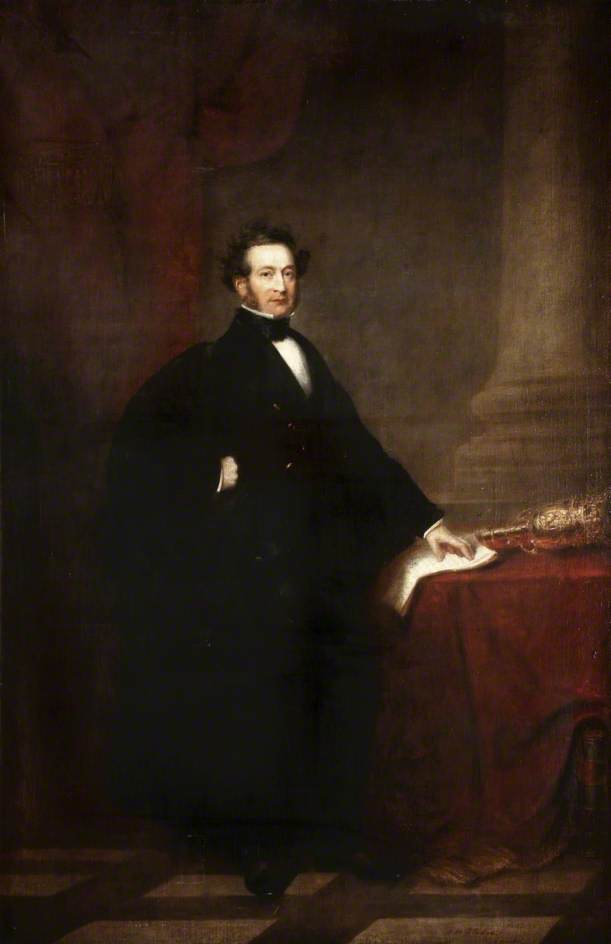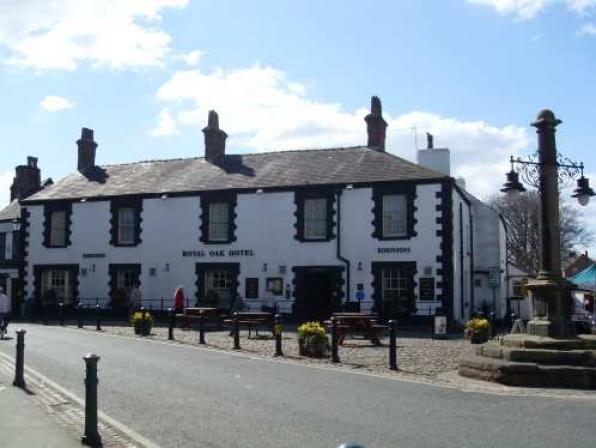I came across a paper entitled ” The Binns Family Of Liverpool And The Binns Collection In The Liverpool Public Library By Eveline B. Saxton, M.A., A.L.A. ” which was published as part of the ” Transactions Of The Historic Society Of Lancashire And Cheshire Vol. CXI. For The Year 1959 “. Miss Saxton seems to have been, at one time, the Assistant-in-charge of the Local History Department, Liverpool Public Libraries. She was also a long-serving member of the Council of the Lancashire and Cheshire Historic Society. One gets the feeling that there is probably rather more to her that that brief description implies.
Miss Saxton throws up almost as many questions as she answers in her paper, she starts:
” All students of Liverpool local history will be acquainted with the most interesting collection of maps, views of old Liverpool and Lancashire, and portraits of old Lancashire worthies in the Liverpool Record Office, which goes by the name of the Binns Collection, and is contained partly in thirty five elephant folio volumes and partly in a number of very large boxes. The originator of the collection was a Liverpool Quaker named Thomas Binns, and it is a remarkable fact that though he was born in Liverpool and belonged to a family esteemed and respected in the town in both public and private life for over a hundred years, when he died in 1842 so little was known of his origin that the prominent Liverpool paper, the Albion, described him as having been born in Ireland. “
She continues:
” It is yet more remarkable that, in spite of two other important Liverpool papers stating that he was born in Liverpool, his Irish birth was accepted as the true version and the error perpetuated in an article in the Lancaster Guardian of 8 April 1911. He was in fact born in Church Street, where his father had lived for over five years, on 24 November 1771, and his name appears in the register of births for the Quarterly Meeting of Lancashire.”
“In 1932 a letter arrived at the Liverpool Reference Library from a Mr. George Binns, a solicitor in Lancaster, who had seen the reference to this Thomas Binns from Ireland in the Lancaster paper, and wrote to refute the statement. He expressed a desire to inspect the Binns Collection on a coming visit to Liverpool, and later not only sent to the Library all the data he could collect on Thomas Binns and genealogical notes on the family, but also lent a transcript of the letters and diaries of Jonathan Binns, the uncle of Thomas, a prominent Liverpool doctor, with permission to copy as much as was thought necessary for the Library records.”
” Thomas Binns died on 27 December 1842, and Gore’s Liverpool Advertiser of 5 January 1843, said, “At his house, Mount Vernon, at the age of 71, Thomas Binns, a member of the Society of Friends. He was a native of Liverpool, and was for a long period highly respected in business, filled the offices of chairman of the Underwriters’ and other associations, and was treasurer to the Infirmary, at the important era of the building of the present edifice”. But however honourably he fulfilled his obligations in business and public, Thomas’s real interest was in the collecting of items of local topography. He was a born collector, and when he died he left, in addition to real property in Liverpool and North Lancashire, the collection of material illustrating the county of Lancaster which we now know as the Binns Collection. It numbered over 6,000 items (the number has of course been greatly increased since then), and comprised maps, plans, views, portraits, MSS. and rare printed items, including broadsheets and election squibs. Many of the portraits are fine mezzotint engravings. While making the collection Binns commissioned certain items, notably the sepia drawings of Liverpool streets and buildings made by James Brierley in 1828-29, which are a valuable contribution to our knowledge of Liverpool topography at that period. “
Liverpool Public Library was started in 1852, and ” In the 2nd Annual Report, 1854, of the Free Public Library occurs this note: “A valuable addition has been made to the Library during the past year, by the purchase from the Executors of the late Mr. Thomas Binns, of the collection made by that gentleman, illustrative of the history of the County of Lancaster, and more especially of the town of Liverpool.”
The collection cost £ 300 in 1853, [ a modern day equivalent of just over £ 300,000 ]
So far, so simple. Then she drops the following into her paper: ” There are about fifty items in the Binns Collection either drawn or engraved by Jonathan Binns, Thomas’s nephew. He was the son of Dr. Jonathan Binns, the younger son of the first Jonathan to settle in Liverpool. ” On this one, she is wrong, well, part right, part wrong. Jonathan Binns (1785 – 1871) was Thomas Binns’s first cousin, not his nephew. But it adds a whole new set of ingredients to the story.
Going back to the Sir Joshua Walmsley story. Sir Josh’s eldest daughter Elizabeth married Charles Binns on the 6th August 1839. Charles Binns “came from a Quaker family with strong Liverpool connections.”
Charles Binns is the grandson of Dr. Jonathan Binns, (1747 -1818), and one of seven children of Jonathan Binns, (1785 – 1871). Miss Saxton takes an interesting line on both Jonathan Binns. “Dr. Jonathan was a most interesting character,” which is true, but she takes a slightly harsh line with Jonathan junior, who she almost portrays as a Forest Gump character.
She quotes ” a letter sent by a member of the Binns family, which gives an account of the doctor’s strange treatment of his elder son, Jonathan. “Dr. Binns”, says the writer, “appears to have grossly neglected the education of his son, the late Mr. Jon. Binns of Lancaster. He did not have him taught Latin, History or Geography, and at an early age put him to learn farming with a mere yokel, while on the other hand the other [younger] son (William), who died young, was apprenticed to a physician in Darlington to start his career as medical man.” and
” Mr. Jon. Binns spent much valuable time in after life in learning things he should have been taught when young. He was over 6ft. high and marvellously handsome, clever in all ways, and most expert with his pencil”. and then:
” His father did advance the money to set him up in a farm, but he gave this up in 1819, and began business as a land surveyor in Lancaster. His great work is the map of Lancaster which he published from an actual survey made in 1821: during its preparation he collected a number of old people’s recollections.”
We’ll come back to both in other posts, but Dr. Jonathan Binns, (1747 -1818), was one of the only two Liverpool persons who signed the first list of the Abolitionists of Slavery. He then became the Superintendent of Ackworth School [the Quaker boarding school], which both his sons attended.
Jonathan junior’s great work was not a map of Lancaster, though he did make one, but actually a two volume work “The Miseries and Beauties of Ireland” Jonathan Binns 1837 which is fascinating, and, with hindsight, slightly heart-breaking at the same time. It’s in part an account of two years travelling round Ireland, and in part a description of poverty in Ireland, and also very practical plans and suggestion to improve agriculture, and alleviate that poverty.
It’s a tragedy he wasn’t listened to more.











